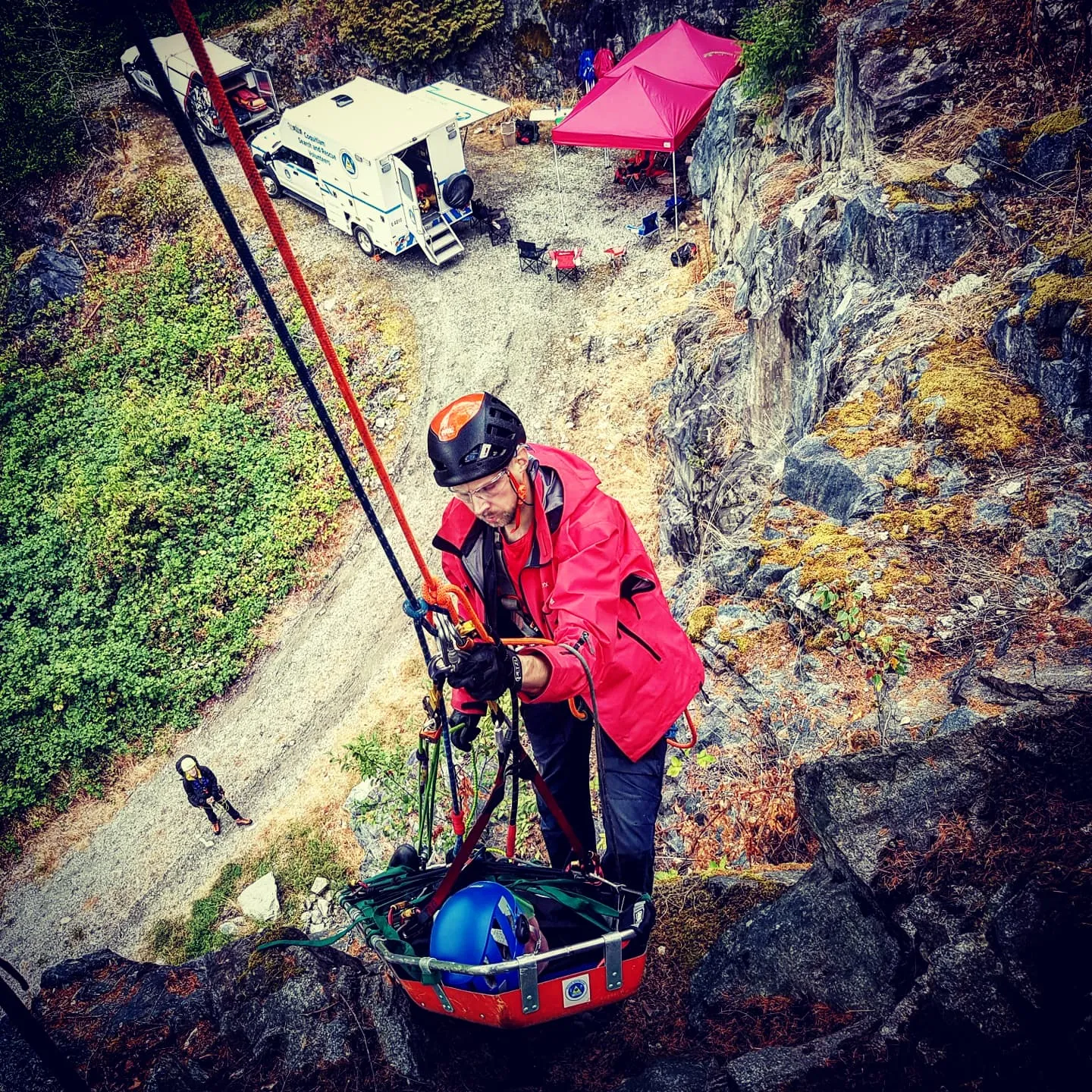This workshop standardizes wilderness rope rescue and provides the foundation skills for students who would like to move into the wilderness rescue discipline. This course is designed to meet the job performance requirements found for NFPA 1006 Chapter 11, 2021 Edition.
Course Contents
The course includes:
- Governing Principles
- Identification of resources
- Rescue site size up, overview and safety
- Command & Communication
- Managing hazards and resources
- Ropes (knots, bends and hitches)
- Equipment familiarization
- Anchoring and rigging principles
- Force limiting, fall factors, force multipliers
- Patient packaging
- Simple mechanical advantage systems
- Dual capability two tensioned rope systems
- Edge management
- Low to steep embankment rescue scenarios
The course consists of both classroom and field instruction.
This workshop is in conformance with NFPA 1006 & 1670 and meets and exceeds all WorkSafeBC Standards for Wilderness Rescue.
Students will be given a written, individual proficiency, and team practical evaluation.
What To Bring:
It is recommended that students bring weather-appropriate clothing and boots/shoes as field exercises will take place outside. Please bring a lawn chair for outside training venues.
We will provide student kits to include harness, gloves, helmet, etc. Students are welcome to bring their own PPE if they prefer.
Course Schedule
Day 1- Morning:
- Theory Lecture
- Knots, Bends, and Hitches
- Equipment Introduction
- Classroom Hands-On
- Afternoon:
- Equipment Review
- Knots Review
- Mechanical Advantage Systems
- Anchoring
Day 2- Morning:
- Theory Lecture
- Classroom Hands-On
- Knots Bends and Hitches
- Lowering Systems
- Afternoon:
- Knots Review
- Patient Packaging
- M/A Systems
- Complete Systems on Low-Slope
Day 3- Morning:
- Steep Slope Scenario Evolutions
- Afternoon:
Main Teaching Points
(As per NFPA 1006 and 1670 JPR's)
Awareness Level
- Recognize the need for support resources
- Recognize incident hazards and initiate isolation procedures
- Recognize needed resources for a rescue incident
- Initiate a discipline-specific search
- Perform ground support operations for helicopter activities
- Initiate triage of victims
- Assist a team in operation of the haul line of a rope mechanical advantage system raising operation
Operations Level
- Perform size up a rescue incident
- Inspect and maintain hazard-specific PPE
- Inspect and maintain rescue equipment
- Demonstrate knots, bends, and hitches, given ropes
- Construct a single point anchor system
- Construct a multiple-point anchor system
- Conduct a system safety check
- Place edge protection
- Construct a belay system
- Operate a belay system during a lowering or raising operation
- Construct a fixed rope system
- Construct a lowering system
- Construct a simple rope mechanical advantage system
- Direct a team in the operation of a of a simple rope mechanical advantage system
- Negotiate an edge while attached to a rope rescue system
- Access, assess, stabilize, package, and transfer victims
- Direct a litter-lowering and litter-raising operation in a low-angle environment
- Operate as a litter tender in a low-angle lowering or raising operation
- Terminate a technical rescue operation




